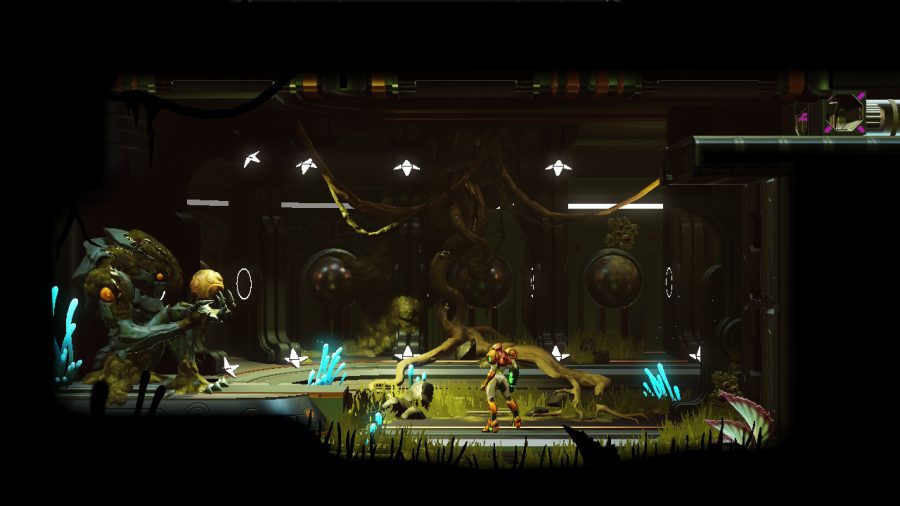“Metroid,” one of Nintendo’s most beloved yet long dormant franchises, is finally back and arguably better than ever with “Metroid Dread,” developed by the Spain-based Mercury Steam and published by Nintendo exclusively on the Switch.
Initially unveiled at E3 in June, “Dread” released Oct. 8 and became the first brand new 2D-style “Metroid” game in 19 years and the first brand new mainline “Metroid” game at all since 2010’s ostracized “Metroid: Other M.” The game finally continues the chronological story of the series, taking place after the events of 2002’s “Metroid Fusion” wherein the series’s protagonist Samus thought she exterminated the deadly X parasite once and for all.
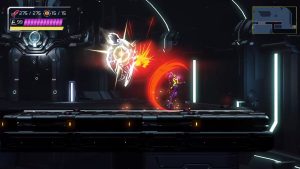
At the beginning of “Dread” it is revealed that the mysterious Planet ZDR may still have the X parasite, and Samus, one of the very first woman protagonists in video games, must investigate. What becomes of this journey is full of twists and surprises that will not only intrigue any new player to the series, but delight the most dedicated of “Metroid” series veterans.
“Dread’s” 2D action gameplay features some of the tightest and most precise movement that a game of this format could offer with excellent combat to back it up. Each of the many power-ups from the franchise’s past, such as the “Speed Booster” and “Shinespark,” feel like the best iterations of themselves, both aesthetically and in gameplay. In addition, upgrades that are new to the series add another level of depth.
The Phase Shift, for example, allows you to rapidly dash back and forth up to three times and is an excellent tool for both speedrun-like movement and defensive maneuvers versus many of the game’s difficult bosses.
Each of the upgrades build upon your arsenal in a significant way, and just about everything feels like it has a use; no ability overshadows another, and by the end of the game you could not feel more powerful.
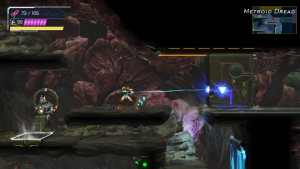
“Dread”’s combat difficulty is truly one of the most well-balanced experiences I have had in a game in recent memory. To be blunt, the game is hard, but the best kind of hard, particularly in the game’s phenomenally designed boss battles when you are forced to learn patterns and find creative strategies that will lead to a satisfying success. Getting a game-over is always a learning experience. The game never feels unfair, and dying occurs only through personal mistakes, never poorly constructed mechanics.
There is a lot of room for personal expression in the game, allowing you to use the variety of weapons and techniques at your disposal to solve a puzzle or fight in more ways than one.
Many of the most complex puzzles in the game that lead to upgrades can be completed in a few different ways, something I discovered watching another playthrough after completing my own.
In general, the “collect-a-thon” is very fun and entirely possible to 100% without ever touching a guide. It is a textbook metroidvania experience that rivals the best of Metroid’s past, even “Super Metroid” (1994) which is said to have defined the genre.
Samus’s character shines in “Dread’s” plot as a fearless, badass bounty hunter who will not back down from a challenge. Developer Mercury Steam understands the intricacies of her character, and veteran fans will greatly appreciate its approach to her portrayal.
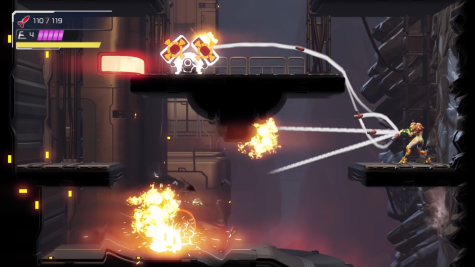
The story is interesting enough to keep the attention of new players to the franchise, but longtime fans will devour the many twists and surprises that come along the way, along with the game’s epic ending. While Samus interacts with a few characters, such as the computer artificial intelligence, Adam, who gives her advice and direction, it is generally a very lonely experience on the mysterious Planet ZDR.
The games that perfect this atmosphere in the “Metroid” series, “Super Metroid” and “Metroid Prime,” are considered by critics to be some of the greatest games ever made, and “Dread” finds itself right up there. The environments are reminiscent of many in the franchise’s past, although not all of them are particularly memorable and there is some repetition.
The soundtrack, while absolutely “Metroid”-like, is also mostly forgettable and one of the weakest in the series. There are few memorable tracks, even during boss fights. The soundtrack is fitting, though, and does contribute to the game’s atmosphere.
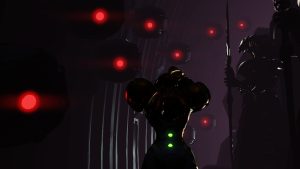
Playthroughs can last anywhere from eight to 20 hours depending on completion percentage and your experience with the franchise, and the end of my first had me wanting more instantly. The newly unlocked Hard Mode and different strategies that you may only learn near the end of the game create a heavily replayable journey that is wholly one of the best games of the year.



